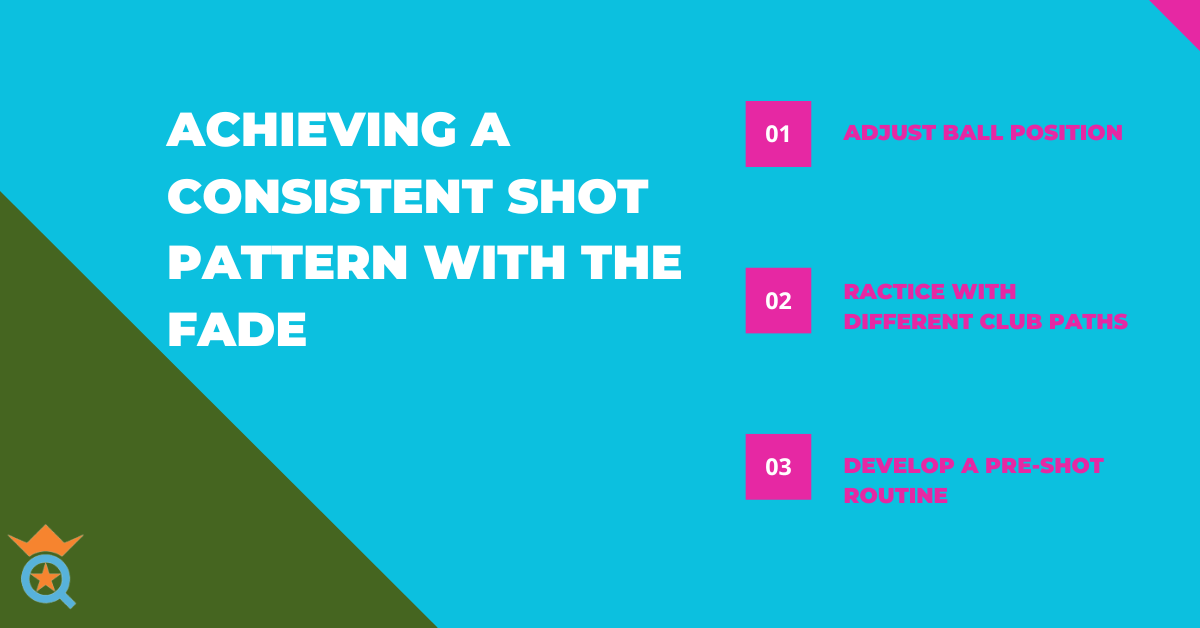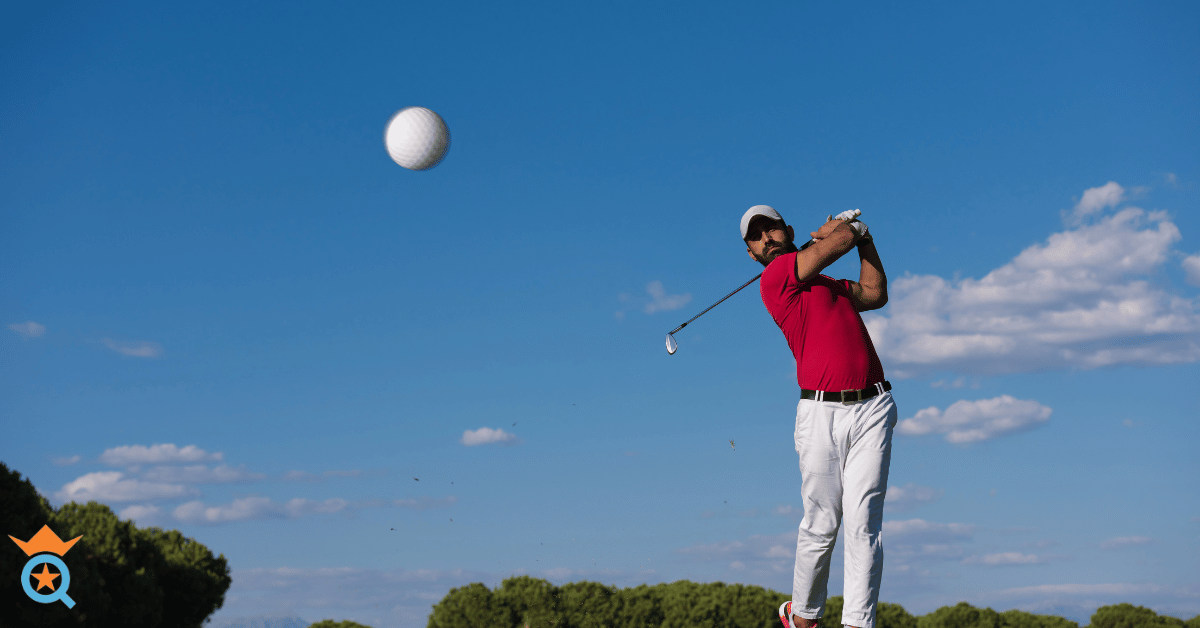Mastering the art of hitting a fade in golf is a vital skill that can elevate your game to new heights. This versatile shot offers strategic advantages on the course, allowing you to navigate around obstacles and tackle challenging pin placements.
Although there are various methods for executing a fade, we'll focus on a more straightforward approach that has proven beneficial for most golfers. This powerful technique is rooted in the "new" ball flight laws, providing a deeper understanding of the game's mechanics and enhancing your performance on the greens.
Join us as we dive into this game-changing method that will simplify your golfing experience and empower you to conquer the course with confidence and precision.
Understanding the New Ball Flight Laws
The evolution of golf has seen a significant shift in our comprehension of ball flight laws, transitioning from traditional teachings to more data-driven insights. The old ball flight laws primarily focused on the clubface's position at impact, claiming it determined the ball's initial direction. In contrast, the new ball flight laws emphasize the critical role played by both the clubface angle and the swing path in dictating ball flight.
This breakthrough in our understanding results from recent technological advancements, including Trackman launch monitors and high-speed cameras. These tools have allowed us to accurately analyze golf swings, uncovering previously unknown nuances in ball flight dynamics. Consequently, we now recognize that the clubface angle predominantly determines the initial ball direction, while the swing path influences the curvature of the shot.
By embracing these modern ball flight laws, the more straightforward method outlined in this article offers golfers a more reliable and practical approach to hitting a fade. Harnessing the power of this updated understanding, you'll be better equipped to execute a consistently impressive fade shot that can give you the edge on the golf course.

Hitting a Fade: The Easiest Method
A fade shot is a good golf technique characterized by its trajectory, which starts left of the target line and gently curves back to the right. This shot shape is precious when navigating obstacles, playing against the wind, or targeting a pin placed on the right side of the green.
The fade shot combines swing path and club face direction at impact. The shot achieves its distinctive curvature by imparting a clockwise spin on the golf ball.
To execute a fade using the most straightforward method, follow these key steps:
- Set up with the club face aiming slightly left of the target: Position your club face to a point just left of your intended target. This alignment will help initiate the leftward start of the ball's trajectory.
- Align your feet, hips, and shoulders further left than the club face: By aligning your body to the left, you effectively create an open club face position relative to your swing path. This setup will result in the cut spin necessary for the ball to curve back to the right.
- Swing along the line of your feet, hips, and shoulders, allowing the open club face to curve the ball back right: As you initiate your swing, ensure that your motion follows the alignment of your feet, hips, and shoulders. This will produce the desired fade shot trajectory, with the ball starting left and gently curving back toward the target line.
By incorporating these steps into your golf game, you'll be able to master the easiest method for hitting a fade shot, providing you with a valuable skill to tackle various situations on the golf course.

Achieving a Consistent Shot Pattern with the Fade
Consistency in shot patterns is essential for golfers, as it enables them to predict and control the trajectory of their shots more effectively. A consistent shot pattern improves overall performance on the golf course and instills confidence in players, allowing them to approach each shot with greater self-assurance.
As discussed earlier, the more straightforward method for hitting a fade can help golfers achieve a more consistent shot pattern. By simplifying the process and focusing on essential aspects like club face alignment, body positioning, and swing path, golfers can create a repeatable motion that leads to a more reliable fade shot.
To further improve consistency in your fade shot, consider these tips:
- Adjust ball position: Experiment with different ball positions in your stance to find the optimal placement for a consistent fade. Placing the ball forward in your stance can encourage an open club face at impact, promoting the desired cut spin.
- Practice with different club paths: Understanding how varying club paths affect your fade shot will enhance your ability to produce a consistent trajectory. Spend time on the range working with slightly different swing paths to fine-tune your shot and increase your awareness of how minor adjustments can impact the result.
- Develop a pre-shot routine: A consistent pre-shot practice can help you mentally prepare for each shot, ensuring that you're focused and ready to execute the necessary swing mechanics. Incorporate elements such as alignment, visualization, and deep breathing into your routine to promote consistency in your fade shot.
By implementing these tips and consistently practicing the more straightforward fade method, you can develop a reliable shot pattern that will enhance your overall performance and allow you to navigate the golf course confidently.

Mastering the Straight Shot and Other Ball Flights
Understanding the intricacies of various shot shapes, including the fade and straight shot, is vital for golfers seeking to excel in the game. The fade shot, characterized by its left-to-right curvature, contrasts with the straight shot, which follows a linear path directly toward the target. Mastering both shots allows golfers to tackle diverse situations on the course, providing greater versatility in their game.
As you develop your skills in hitting a fade, you'll gain a deeper understanding of the relationship between club face direction, swing path, and ball flight. This knowledge can also be applied to other golf shot shapes, including draws, hooks, and slices. By adjusting the club face angle and swing path, you can manipulate the ball's trajectory to suit various situations on the course.
Here are some tips for mastering the straight shot and adjusting club face direction for different shot shapes:
1. Hitting a straight shot
To achieve a straight shot, your club face should be square to the target at impact, and your swing path should follow the target line. Focus on maintaining a balanced and controlled swing, ensuring the club face remains square. Experiment with different grip styles and swing techniques to find the one that best suits your natural swing and promotes a straight shot.
2. Adjusting club face direction for draws and slices
Understanding how to manipulate the club face and swing path allows you to shape your shots intentionally. For a draw (right-to-left curvature for right-handed golfers), aim the club face slightly right of the target and align your body even further right. Swing along your body line, and the resulting closed club face relative to the swing path will create the necessary right-to-left spin. Conversely, for a slice (left-to-right curvature for right-handed golfers), aim the club faces slightly left of the target, align your body further left, and then swing along your body line to produce the left-to-right spin.
By mastering the fade, straight shot, and other ball flights, you'll be better equipped to handle any challenge the golf course presents, enhancing your overall performance and enjoyment of the game.

Final Words
Mastering the art of hitting a fade shot in golf is essential for any player looking to take their game to the next level. The more straightforward method outlined in this article allows golfers to simplify hitting a fade shot and achieve a more consistent shot pattern. Furthermore, understanding the new ball flight laws and how they influence shot shape and ball flight can give golfers a significant edge in their game.
By practicing and experimenting with these new insights, golfers can improve their overall game, enhancing their ability to navigate the course and tackle challenging situations. Remember to focus on club face alignment, swing path, and body positioning to achieve the perfect fade shot, and use this knowledge to work on other shot shapes and ball flights.
Incorporate these tips into your game and keep practicing to develop your skills and confidence on the course. With dedication and effort, you'll be able to master the fade shot and take your golf game to new heights.
Growing Popularity of Golf
FAQs
How to hit a fade with a driver?
To hit a fade shot with a driver, use the same principles as any other club. Aim the clubface slightly left of the target, align your body left of the clubface, and swing along your body line. To increase your chances of success, consider teeing the ball slightly lower than usual and playing the ball slightly back in your stance.
How to hit a fade and draw?
To hit a draw, aim the clubface to the right of the target, align your body right of the clubface, and swing along your body line. To hit a fade, do the opposite. Aim the clubface to the left of the target, align your body left of the clubface, and swing along your body line.
How to hit a fade with a strong grip?
To hit a fade with a strong grip, aim the clubface left of the target, align your body left of the clubface, and swing along your body line. A strong grip can make it more challenging to hit a fade, so focus on keeping your clubface open through impact.
How to hit a fade left-handed?
To hit a fade left-handed, aim the clubface right of the target, align your body right of the clubface, and swing along your body line. Follow the same principles as hitting a fade right-handed, but reverse the alignment and swing path.
Hitting a fade from the inside?
To hit a fade from the inside, aim the clubface left of the target, align your body left of the clubface, and swing along your body line. Focus on keeping your swing path inside-out to produce the desired fade shot.
How do you hit a fade for beginners?
Beginners can use the more straightforward method outlined in this article to hit a fade shot. Aim the clubface slightly left of the target, align your body left of the clubface, and swing along your body line. Practice these steps on the range and experiment with different ball positions and swing paths to fine-tune your shot.
What causes you to hit a fade?
A fade occurs when the clubface is open to the swing path through impact, resulting in the ball starting left of the target and curving back to the right. A right-handed golfer's clubface will look to the right of the swing path when contact is made with the golf ball.
Do more pros hit a fade or draw?
Currently, more golfers on the PGA Tour are hitting small draws that allow them to gather more distance while keeping the ball in play. However, many professionals pierced both fade and draw shots, and individual player preferences and shot shapes can vary.
Why does a fade lose distance?
A fade shot can lose distance if the golfer cuts across the ball with the club coming from out to in, resulting in a more glancing blow. This means the clubhead needs to compress the ball more efficiently, leading to a loss of distance.








